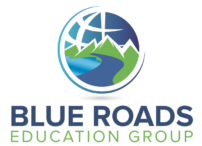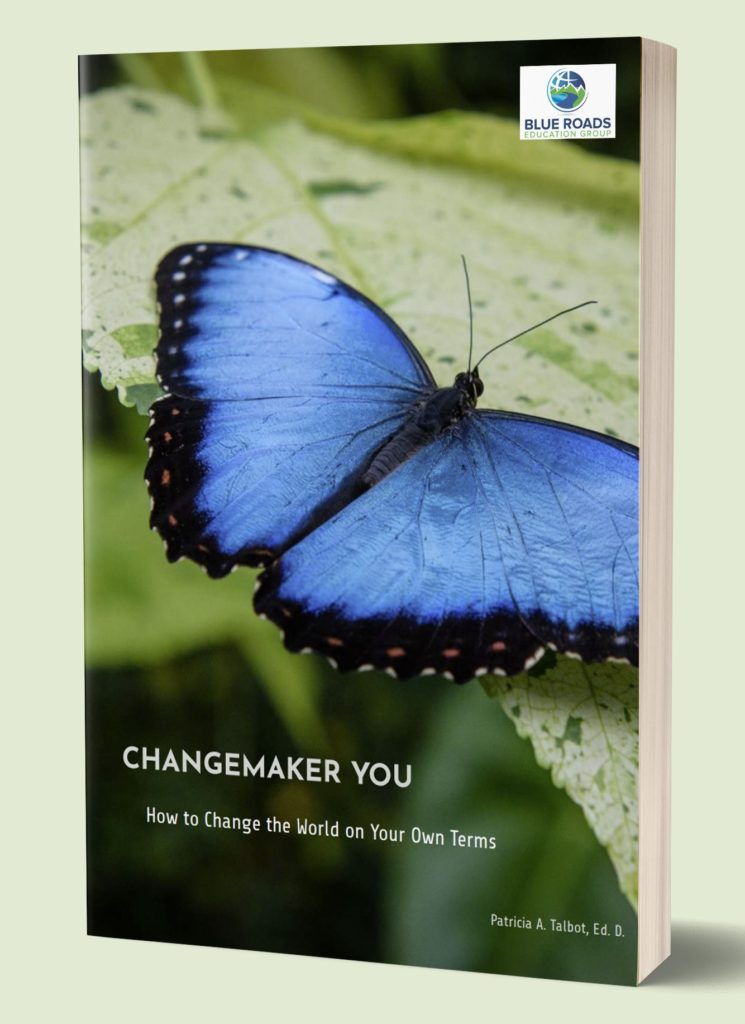I was fortunate to meet Boston history teacher, Kim Young, first as an online classmate in World’ Savvy’s Global Competence Certificate (GCC) program for educators. When I first laid eyes on this world traveling teacher, she was propped up in a bed with a computer on her lap tuning in from Palestine.
A year and a half into the GCC program, the group met up in Ecuador for a field experience working in an Afro-Ecuadorian community. As I’ve gotten to know her, I’ve benefitted greatly from Kim's experiences as a teacher who takes every opportunity for educational travel for the great benefit of her students. Her window on the world gives her the experience and perspective to help those around her to question our biases and use of language as well as how we interpret social and political situations.
Traveling to learn has enriched her own life and helped her to create the kind of classroom where students are pushed to think broadly about the world in which we live and the issues they will encounter in their adult lives.
Watch, read and listen in below to hear Kim’s Homegrown Solutions for a Patchwork World in her own words.
Kim’s Homegrown and Ever-Expanding Patchwork
When asked where she was grown and who her people are, Kim moves naturally and quickly to her core identity as a teacher – “specifically a history teacher.” Growing up in Michigan with a teacher for a mother, she wasn’t at first excited about entering the field of education. She got her teaching credential only because she was ahead of her peers in her university studies and didn’t want to graduate early.
As a young teacher in Boston, she experieced “a little bit of a culture shock” after moving from Ann Arbor. For her, this is when she really began to become aware of her identity as a white woman from the Midwest.
Now, I feel a little different back there and more normal in Boston, but growing up in Ann Arbor it was great being near the University of Michigan. We had a lot of new international people coming in and out and a lot of opportunities in kind of a small town, but situated with a large university where you get the advantages of the big city.
She credits her Midwestern habit of connecting with a smile and wave hello as key to her easy manner in meeting new people. That openness, along with a strong foundation in the value of teamwork gained through athletics, is critical to who she is and how she likes to work.
Something that is a through line for me is teamwork and working as a team. I'm mostly motivated when working with others and when others depend on me or need me. That's when I feel best.
Growing up as the “media supported norm”, as a white woman from a middle class family, I feel very privileged that I didn’t have to think about the question (of identity). It was something that was kind of defined for me…But the best part about becoming an adult and more aware of my identity and more interconnected with people is that I have had the chance to become a little more aware of my identity and my people and my privilege.

She identifies “her people” in her professional networks with the GCC, National Geographic and The Fulbright Scholars Program, among other national and international groups with whom she stays connected.
Kim's appetite for travel and learning started very young.
I remember in elementary school a huge moment for me. I got a flyer in fourth grade and said, “I want to go to France next year”. I took that flyer home and I think most kids ask their parents and say, is this something I can do? I went home and told my parents that I was going to study abroad in France the next year and we were going to be hosting a student and I was going to get a job on a paper route to raise the money for the plane ticket. I was going to babysit and walk dogs and this was all set .
I was going.
Her fifth grade teacher turned out to be the one who would lead the exchange program including afterschool classes to learn about the French culture and language. French students came to her community and she and her classmates traveled to their community in France for three weeks.
I remember everyone asking me, “Aren't you scared? What are you worried about?” and I was like, “I'm not worried about anything. It's going to be exactly the same as Ann Arbor except for people will speak French. I landed in Paris and found out it was nothing like in Ann Arbor, Michigan. It was my first time seeing apartment-style living. It's much smaller spaces, alleyways, markets, public transportation. It was a fascinating moment for me to see that the world can live in a totally different way than my own. And it's equally right.
That was a huge shifting moment for me.
She had other influential school experiences as well. Kim remembers how much her level of engagement, interest and learning multiplied when she had teachers who made her think for herself with strategies like simulations and action-based learning where they had to think about choices and solutions.
Solution-Focused Kim
She had clear memories of opinions about teaching and teachers, but still didn’t think she wanted to be one of them. After graduation, she acquiesced and committed to teach for five years. It was close to the end of the five year period before she was sparked by true inspiration.
An older teacher told her about a local organization that took teachers to China “for free”. Of course, it wasn’t really free, but just as she'd done as a fourth grader, Kim found a way to make it happen. The result was a formative experience traveling and learning along China’s Silk Road.
I had an impression going in as a history teacher that China was one way. Once I started traveling all throughout the western provinces and central China, I saw those regions were totally different . China was this vast diverse country.
I started writing lesson plans about that where my students could experientially explore China. I brought back artifacts and primary sources and developed a large interactive activity very much modeled after what I had seen some of the best teachers I knew do.
This is the point at which things started to shift for Kim as a teacher. The profession transformed into something she began to “really, really love.”
The change of going exploring and then figuring out how to translate that back to my students and then seeing my students engage with the information… having those same moments where I had these shifts in worldview where I saw the world one way and then it went another…
“As individuals from our experiences, we see the world through one set of eyes and one lens. Until we're exposed to something, we have no reason to question our worldview or how we see the world when we assume our way is right and we assume our way is the only way. “
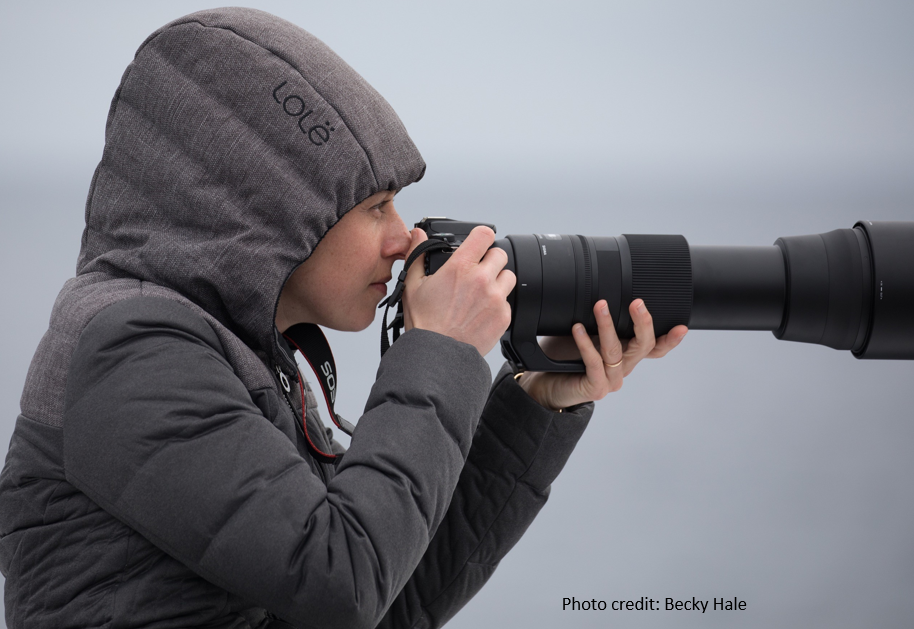
Photo Credit: Becky Hale
As soon as we have an experience which shows us that the world is much bigger and different in a positive way, then it welcomes us to learn more.
It's really important to me that I am a translator for my students of the world and that I can help them identify their worldview. Then show and help them explore the world to see different ways of thinking and different ways of being and framing it. Different is good and different is a part of the world. It's not scary or threatening.
Throughout my life, I've never found different to be scary. I've found different to be exciting and the best part. I love when I think things are one way and I find out they're different. To me, that's awesome. That's earth shattering in a good way… Now I know so much more.
From that one trip on China's Silk Road all the way to Kashgar, driving up a high mountain to Karakuli Lake and looking over and seeing the border of Pakistan and getting to interact with a group of indigenous peoples who were celebrating the Horse's Milk Festival … We just kind of stumbled upon it. That just told me that teaching could be so much and could be a part of my life.
From that point on, I continued to seek out all sorts of opportunities to travel as a teacher but as a learner, not as a tourist.
I have then challenged myself to think about how I can translate these experiences back to my classroom, not through PowerPoints where I show kids pictures of where I've been, but where I can curate a series of resources that they explore and then ask questions and think about things differently and understand what things are similar.
Windows and mirrors. Windows and doors. What looks similar? What looks different? How can it teach me about myself? How can it show me a new way of being?
As a public school teacher, she mentions two systemic situations that support her ability to teach in this more exploratory, student-centered manner.
First, everything relates to social studies. Even science and mathematics impact history, politics and the other social sciences.
There's not anything someone can bring to the table where I can say, “That's really not part of my curriculum.” Everything always involves humans and interactions in some way so it's relevant to my curriculum.
The second thing that maintains Kim's ability to make changes to the curriculum is the absence of a state mandated test for social studies in Massachusetts. Though its been in development for years, so far the parameters of such an assessment have not been agreed upon. In the meantime, it allows Kim to make many curricular decisions within her team and her own initiative.
As a result, she is able to keep her focus on developing skills and competencies that help her students learn to dig deeply and take on broader perspectives. It hasn't always been easy, but she usually gets a “yes” when she approaches the creative projects she wants to take on from the vantage point of the values and priorities of her school system and its leadership. That doesn't mean she gets the financial support or extra time allotted that would be most helpful, but no one stands in her way if she is willing to put in the extra time and find the resources on her own.
That's been okay for me so far.
She has her students for ninth grade only. During that year, she strives do develop “the bones of a set of skills that they then grow on over time, over and over again.”
My students know how to evaluate sources. They know how to find information. They know how to look at things from two different points of view. They can identify whether something's objective or subjective… I have a large number of students who come back to me one year later, two years later, five years later, eight years later with an “aha” moment. They're all on a slightly different timetable, but they will all come back with “Wait a second. Now I know what you were talking about.”
They report seeing shifts in their worldviews Kim finds satisfying as a teacher.
They definitely don't come back agreeing with me, but they come back saying, “I get what you were talking about in a larger way in terms of what global citizenship looks like and what multiple perspectives are… When I saw something in the news, I knew how to think about it critically and I knew how to investigate…how to see when they've completely left out all these other voices.
She notices that they get good at identifying misconceptions and when the “facts” are based on misconceptions. Her work on identifying stereotypes and problematic thinking about different cultures of the world seems to pay off. When she hears words like “Wait a second! They started with a wrong assumption and then built off of that,” she knows she's making a real change and that her students have what they need to make change, too.
CHANGEMAKER KIM
It's that slow change, the real small things over time. The change that I've seen over a decade is something I would have wanted to see in a year. You plant small seeds and then you keep coming back to them and after three or four years people are like, yeah, we should do that or that sounds right. And then you know, however many years later, it circles back again.
Things move much slower locally. I've found more success in these other circles because there's internal politics within a local community and it can be hard because the interpersonal relations or the relationships are so much stronger.
It can happen very quickly in your own garden. In my own classroom with my own students I can change really, really rapidly. In order to do that, I need the regional support of people who are moving rapidly as well…I don't feel like I'm alone. Then the change that I want in my local community outside of my garden definitely happens, but it happens so slowly and it happens in a way that can feel frustrating. If I did not have that regional network, I think I might stop. My ripples of impact might stop. I would see too many walls to changing my district or my larger school. It's not that people aren't open to change, but the time it takes to make change, there's the problem.
An issue in teaching is that there is not a model of teacher leaders. There's not a model that supports a teacher staying in the classroom and being a leader. So I have to enact change in curriculum in my own classroom and then in my own educational team (on top of ) more than full time responsibilities that requires.
Not that people aren't open to change. It's that the system doesn't give time to supporting those teacher leaders.
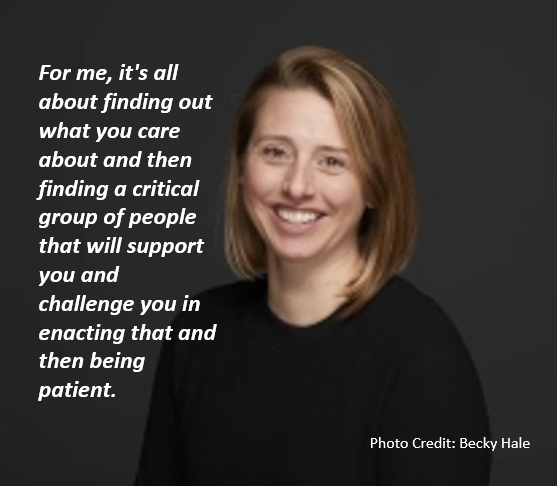
Thank you, Kim, for being persistent and patient enough to give students the quality education they will need to become global citizens in a time when we desperately need them.
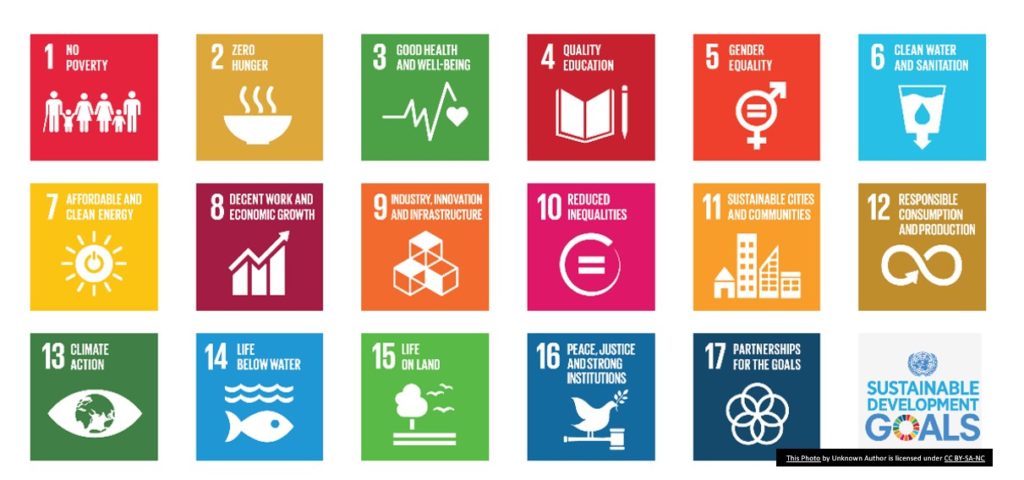
It's easy to recognize that Kim's work as a motivated and engaged teacher addresses the highest intention of Global Goal #4 – Quality Education. This kind of work is what makes attaining the other 16 UN Sustainable Development goals possible. Students capable of seeing the world with open eyes will be prepared to take on poverty, climate, injustice and all of the issues that most plague humanity.
Won't you join Kim in this effort? How can you cultivate homegrown changemakers? Get in touch and let us know.
Podcast: Play in new window | Download
Subscribe: Spotify | iHeartRadio | Email | TuneIn | Deezer | RSS | More
